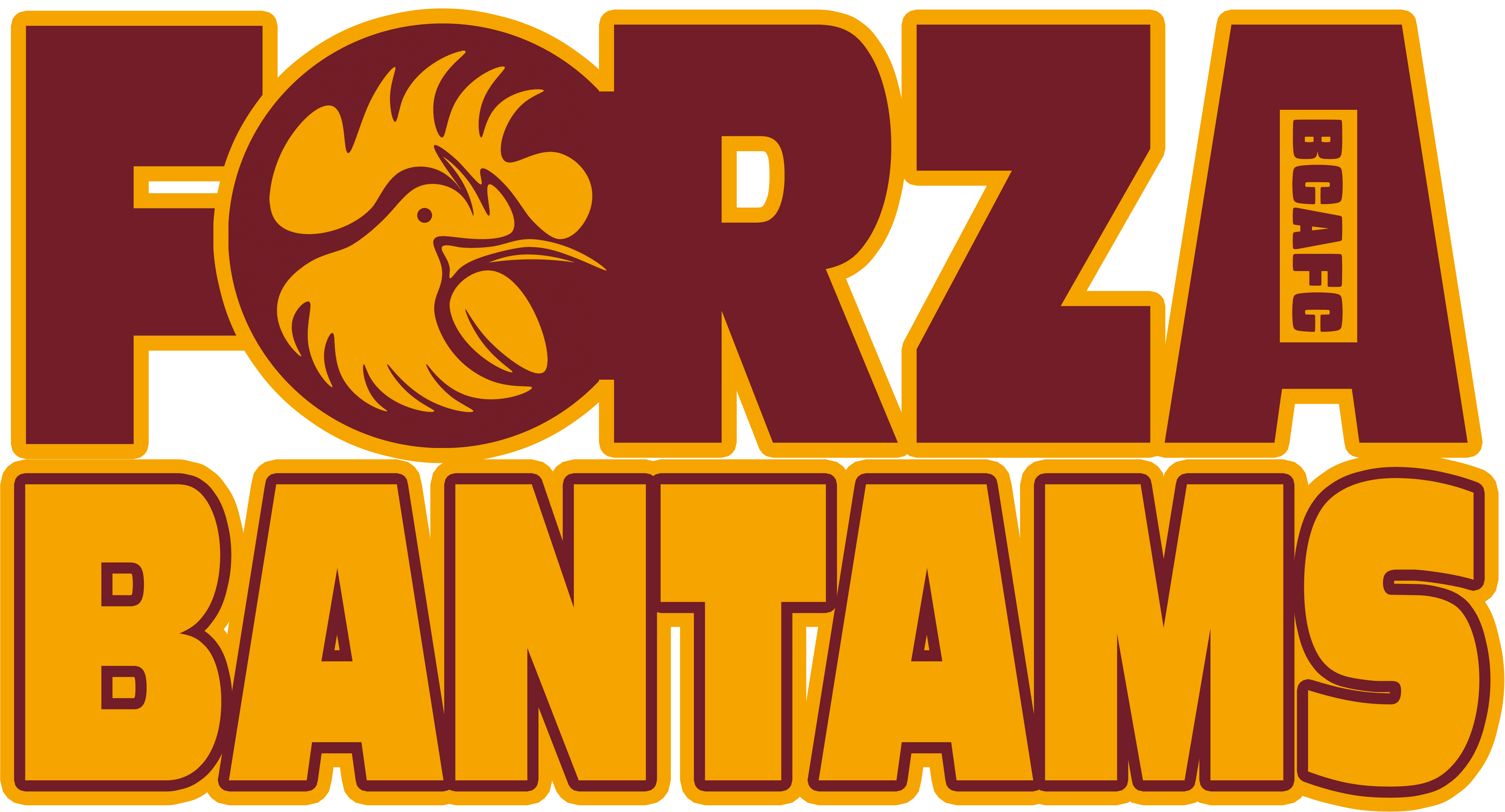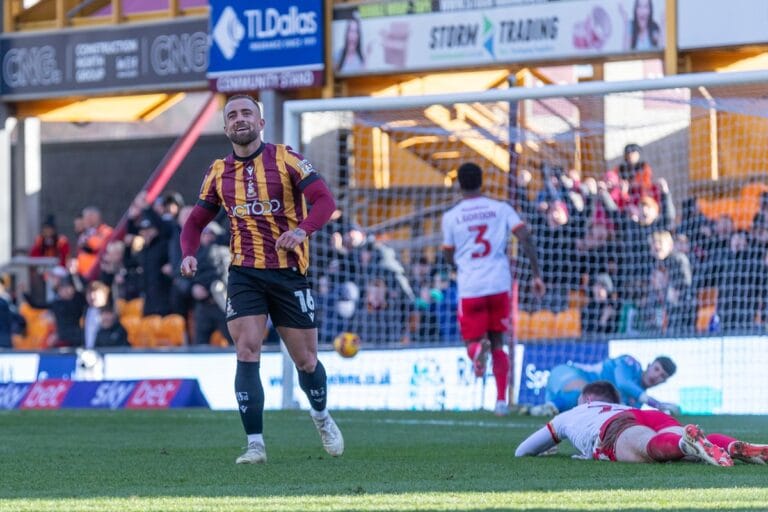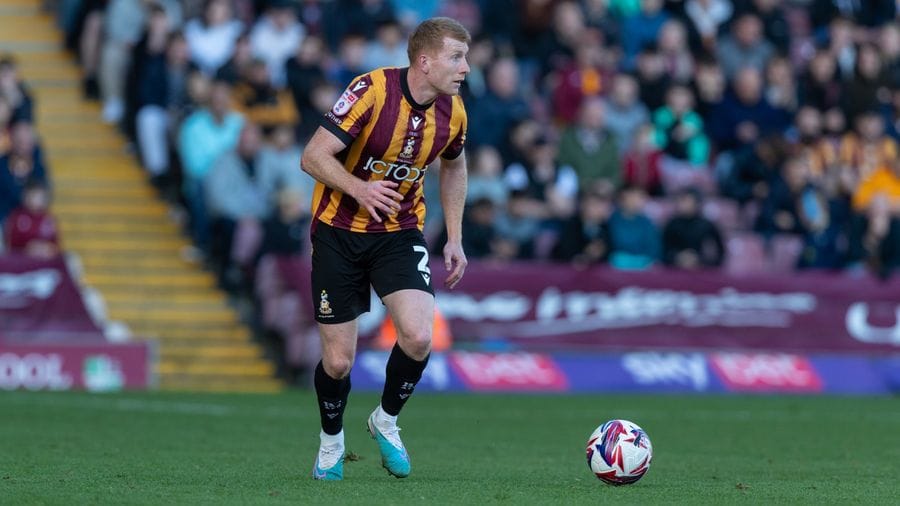Brad Halliday’s Rise: The Player of the Year Season
Brad Halliday’s ascent to prominence during the 2023/24 season with Bradford City was nothing short of remarkable. His distinguished performances carved a niche for him in the hearts of fans and management alike, culminating in him being awarded the Bradford City Player of the Year title. Halliday showcased an exceptional blend of skill, tenacity, and tactical awareness, establishing himself as an invaluable asset to the team and be considered one of the best right-backs in League Two.
Statistically, Halliday’s season was impressive, his statistics for his attacking and defensive prowess was almost equally commendable, with an impressive tackle success rate and critical interceptions that stifled opposition attacks. Throughout last season, he frequently rose to the occasion, demonstrating the ability to change the narrative of a game and keep a calm head when defending. His ability to get back and rescue the lost causes became a trade mark of his game and what fans loved about him.
Moreover, his leadership on the pitch was palpable. Halliday’s communication skills fostered cohesion among teammates, propelling real synergy on the field. His commitment was evident; he consistently placed team objectives above personal accolades, whilst occasionally popping up with game changing moments. Throughout the season, Halliday cultivated a strong rapport with fans, who admired his work ethic and determination, ultimately making him a fan favourite. He was “Mr Consistency” and everything Bradford City fans asked for in a player.
As Halliday concluded the season on a high note, the presented accolades and recognition were well-deserved. His performance set an excellent benchmark that elevated expectations for the following campaign, leaving fans eager to see if he could replicate or even surpass his achievements in the upcoming 2024/25 season. The only concern for fans at that point was ensuring we didn’t lose a player of such importance like we did with Matty Platt to Notts County. Fortunately he signed a brand new deal with the Bantams and that is one reason we really need to be making sure that Brad Halliday continues to have a place in the team.
Positioning Under Graham Alexander: A Shift in Dynamics
Although it began at the backend of last season, Brad Halliday found himself at the centre of a tactical transformation initiated by Graham Alexander. The strategic adjustments made by Alexander significantly altered Halliday’s positioning on the field, bringing about a fundamental shift in his responsibilities and expectations. Previously, under Mark Hughes, Halliday operated primarily as a right-back, focusing on defensive stability and the occasional foray into attack. However, under the new management, his role evolved into a more complex tactical framework. But it was under Graham Alexander where we began to get a hint in a change to the role Halliday was expected to play. The focus had switched on him to get forward more, which we saw him do more often than we had before. But was this enough for the manager? Maybe last season Halliday might have been able to get away with his primary focus still been on defending whilst occasionally venturing into an attacking role when it was safe to do so, whereas now, Alexander is expecting him to attack as a matter of being his main role? And in reality is this playing to his strengths which are defending?
Graham Alexander’s tactical approach emphasized fluidity and a more dynamic midfield presence, pushing Halliday into a hybrid role that required him to not only defend but also contribute significantly to the build-up play. This shift aimed to optimise the team’s overall structure and possession-based style. As a result, Halliday was tasked with fulfilling the duties of both a defender and a midfielder, which demanded a higher level of technical skill and decision-making ability.
While the intention behind this strategic move was to enhance team performance, the implications for Halliday were stark. The increased expectations for his contributions left him grappling with the complexities of his new role. The transition proved challenging, as the tactical demands often overwhelmed his ability to impact the game positively. Moreover, the lack of familiarity with these responsibilities may have contributed to Halliday’s declining form throughout the season.
In the opening fixture with MK Dons we saw early frailties when he was at fault for the goal we conceded, but this is more likely born out of the fact he is now finding himself further up the pitch than he normally was when he was ripping it up under Graham Alexander the previous season.
In comparison to his time under Hughes, where he thrived on simplicity and clarity in his role, the changes under Alexander introduced an element of uncertainty. Halliday’s struggles exemplified the difficulties that can arise when players are asked to adapt to different tactical philosophies, ultimately impacting their performance and overall contribution to the team during a tumultuous season.
His strengths mainly lie in his defensive duties, but now he is being asked to get forward more and provide assists. This has lead to a drop off in his defensive capabilities as he struggles to get back to cover and as a results seems to look “half a yard” slower than he used to be. The fact is that the more you introduce the need to attack into his game, the further away he is from his usual starting position when dealing with threats down his side of the pitch.
With Jay Benn’s arrival at the club, it has put Halliday under more pressure as Benn seems to tick all of the boxes in that role. His crossing has been excellent from what we have seen of him and he is able to take care of the defensive part of the game too. But would Bradford City benefit more from the two players coexisting in the same starting 11? We saw a hint of that when Brad Halliday deputised at centre back. And with Graham Alexander seeming to prefer his wide centre-backs, this seems like an ideal role that Brad Halliday could be successful in. It was no coincidence he had one of his best games this season when he did, and it most certainly is something the manager might want to consider as it seems such a waste leaving a player of his calibre on the bench.
Analysis and Future Prospects for Halliday
Brad Halliday’s 2024/25 season commenced with a set of mixed performances, raising questions about his current form and future prospects. Initial appearances suggested a player struggling to recapture the flair and efficiency that once characterised his game. While Halliday has consistently demonstrated his technical skills on the pitch, recent outings have highlighted concerning lapses in defensive duties and an inconsistency in decision-making, which have contributed to a less impactful presence for Bradford City.
Critical to understanding Halliday’s current struggles is the consideration of his previous role within the team dynamics. Previously thriving in a structure that allowed him to express his abilities freely, the adjustments in tactical framework could have resulted in his decreased performance. Should there be an opportunity for him to revert to his former position or adapt within a more suitable system, it is plausible that a resurgence in form could follow. Additionally, a mindset reset may be vital for Halliday, providing him mental clarity and confidence necessary to navigate the challenges of the season. Maybe a role as a wide centre-back could be more of a benefit to his skillset whilst Jay Benn is deployed as that attack minded wing-back in his place.
Looking ahead, the outlook for Halliday remains uncertain yet not devoid of potential. If he can embrace feedback from coaching staff and apply lessons learned from the early season, there exists a genuine opportunity for growth. Moreover, his experience may serve as a teachable moment not just for him, but also for younger players aspiring to reach similar heights. As the season progresses, Bradford City management will need to evaluate whether to provide Halliday with consistent playing time or consider alternative strategies that may align better with the team’s objectives. Ultimately, Halliday’s journey reflects the often unpredictable nature of professional football, wherein obstacles can serve as a springboard to future success.
But as things stand, it feels a little premature to be writing Brad Halliday off. He is also notoriously a slow burner who usually gets better with more game time. He was almost written off when he was signed by Mark Hughes and put in some underwhelming performances, and look what he went on to do. And we have to remember that as good as Jay Benn has been, he’s not our player. And if he carries on with his initial form, he is unlikely ever to be our player as Lincoln City could choose to keep him as a permeant fixture or sell him to a club with a bigger budget than Bradford City.
When we signed Jay Benn on loan it seemed a bit of a strange move at the time, after all, Brad Halliday of all players was not the player we needed competition for, there were a number of other places that were weaker where we should have looked to strengthen instead, so it is in our interests to find a suitable role for Halliday in our team, and I personally think that could be operating as a wide right sided centre back which I believe would bring the best out of him and suit the tactical approach of Graham Alexander much better too.










